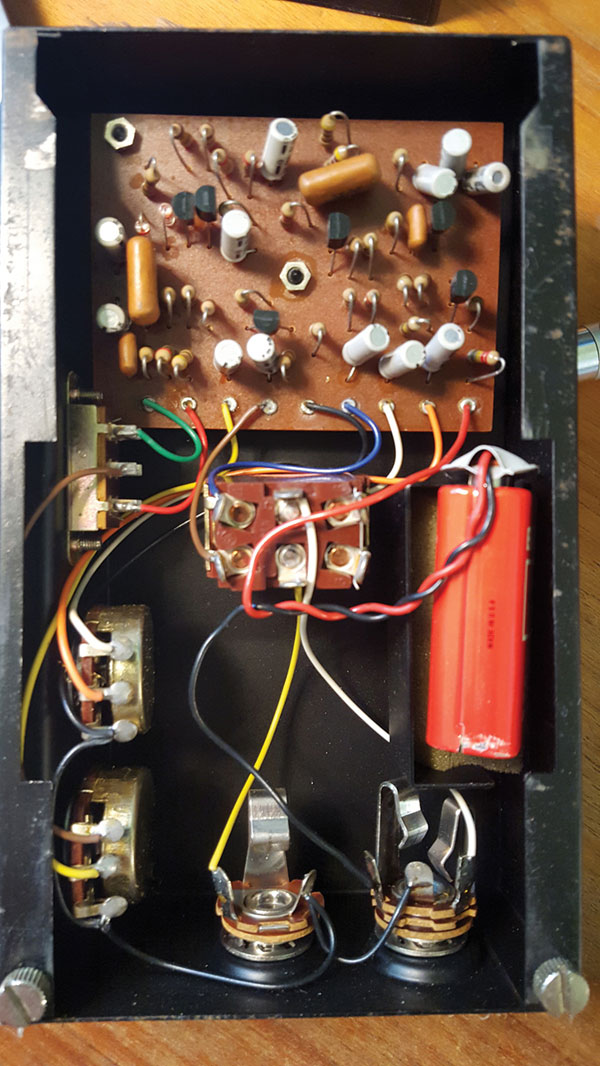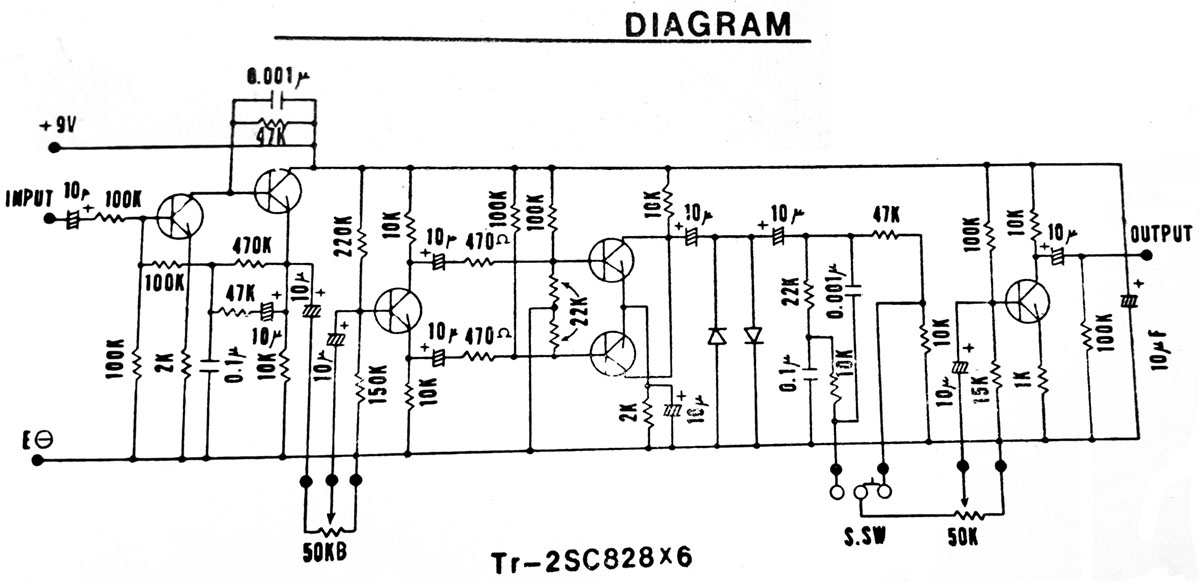The schematic is unnecessary for fixing this problem. Looking at the picture, the wiring of the second switch in the photo tells the whole story. There are only 5 components involved in bypass mode: 2 guitar cords, 2 jacks, and one DPDT switch, plus the wiring. If it were a broken wire you would see it.
First, check both guitar cords by plugging the guitar directly into the amp or doing a continuity check. If one or both are bad, you’re done. If not, remove the battery, plug a cord into each jack, and check continuity from the sleeve of each plug to the sleeve contact on its jack (note that on the right hand jack in the photo, you want the shorter sleeve contact. The longer one controls battery power); repeat from tip to tip contact, if needed. Bad continuity means a bad jack, since you know the cords are good. If all else shows good continuity, the switch is bad.


